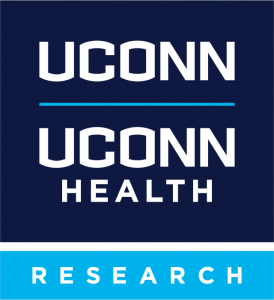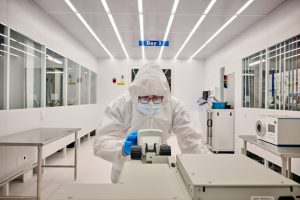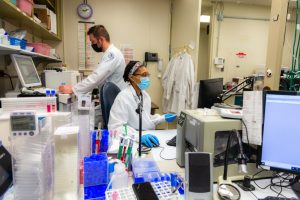
IN THIS ISSUE:
- Welcome, Michael Centola, new AVP for Research Integrity
- EH&S annual audits and new BSO
- IRB new staff member
- Research Safety — securing research facilities
- Research Compliance in the News

Welcome, Michael, new AVP for Research Integrity!
Last month, Michael Centola joined the Office of the Vice President for Research as our new Associate Vice President for Research Integrity! Michael brings over 20 years of experience in the field of research integrity, most recently as the Director of the Office of Research Integrity at UMass Lowell where he was responsible for the IACUC, IBC, IRB, COI, Radiation Safety, and Export Control programs. Michael graduated from Fordham University with a Bachelor of Science degree in Biological Sciences and has a Masters of Health Sciences degree in Medical Laboratory Sciences from Quinnipiac University. Michael will assume responsibility for UConn/UConn Health’s IACUC, IBC, IRB, COI, COC (Conflict of Commitment), Radiation Safety, and Environment Health & Safety (at UConn Health only).
Welcome to John Sterpka, new Biological Safety Officer!
The Office of the Vice President for Research (OVPR) and Environmental Health & Safety (EH&S) would like to welcome Mr. John Sterpka, RBP as our new Biological Safety Officer. He comes to us from Yale University where he served as the Assistant Biological Safety Officer as well as a Safety Advisor. With his broad range of experience in biological, chemical and radiological safety, he will be a great addition to the program.
Annual Lab Audits
The annual laboratory audit program is in full swing. This OSHA mandated program requires EH&S to visit every laboratory (research and clinical) to ensure a safe/compliant work environment is maintained for new and/or existing staff. The goal is to reaffirm the proper handling, storage and use of hazardous materials starting from the delivery of the reagents/chemicals to the ultimate disposal. In the regulatory world, this concept is referred to as “cradle to grave.” There are many safety/regulatory facets that must be considered as the reagents/chemicals proceed through the research processes. EH&S staff will be auditing such topics as, but not limited to, completion of Laboratory Safety Training, proper storage/segregation of chemicals, correct selection of personal protective equipment (PPE), general laboratory cleanliness and waste identification/management. The Chemical Hygiene Plan (CHP) is the primary document all laboratories should reference for proper operations. It can be found at https://content.research.uconn.edu/pdf/uch/rcs/ehs/CHP.pdf. This is the guidance/standard that EH&S staff reference during our laboratory audits.
Steve Jacobs, EH&S Director
 Seasonal Reminder from the Biosafety Program: Laboratory Attire
Seasonal Reminder from the Biosafety Program: Laboratory Attire
With summer here, it’s a good time to remind staff that appropriate attire is required within laboratory areas. Your arms, legs and feet should always be covered when working at the bench. Shorts are not allowed in the lab.
- BSL-1: lab coats, gloves, and eye protection should be worn as needed
- BSL-2: lab coats and gloves at all times, masks, eye protection, and face shields as needed
| In the event of a laboratory accident/incident/exposure, immediately seek medical treatment at Employee Health/Occupational Medicine during normal work hours or the Emergency Department night weekends and holidays. Report the injury to your PI/supervisor and EH&S (x-2723) as soon as possible. A “First Report of Injury” must then be filed with Gallagher Bassett at 1-800-828-2717. |
Here are a few Do’s and Don’ts to keep in mind!
DO:
- Wear a lab coat that fits and can be fully buttoned, snapped or tied.
- Keep designated lab coats in designated labs.
- Store lab coats in a designated lab area, not at your desk or on your chair. Clearly identify the lab coat user to avoid mixing them up.
- Send your lab coat for professional cleaning regularly. Keep contaminated lab coats separate from clean coats while awaiting laundry.
- Wear lab coats and safety glasses/goggles while actively working at the bench where there is a potential for a splash.
- Wear clothing that covers the legs and closed toed shoes in active laboratory areas.
- Make sure long hair is pulled back in a ponytail or bun.
- Know your emergency procedures (eyewash units, safety showers, evacuation routes, 911).
- Be sure eyewash units are flushed weekly, documented and records kept for two years.
DON’T:
- Don’t wear any PPE (including lab coats and gloves) in public areas such as hallways, restrooms, elevators, lunch spaces, etc.
- Don’t push or roll up lab coat sleeves. Wear sleeves so that they fully cover skin for optimal protection.
- Don’t take your lab coat home to launder.
- Don’t share lab coats – everyone in the lab should have their own coat.
- Don’t let dirty lab coats pile up as they can cause cross contamination.
- Don’t leave items in your lab coat pockets as you may forget about them when you send the coat out for cleaning.
To contact us, please email IBC@uchc.edu or BioSafety Program Coordinator, Victoria Scranton.
New Research Compliance Monitor in the HSPP

Rebecca Burke, MS, joined our team in March 2023! Rebecca has worked at UConn Health for over 20 years. Prior to joining our team, she worked in or collaborated with the Departments of Psychiatry, Public Health Sciences, Dental Medicine, and Center for Quantitative Medicine and has extensive research and program coordination experience, including study design, statistical analysis, grant writing and program development.
Rebecca is responsible for auditing IRB-approved studies as part of the HSPP Monitoring Program. The purpose of the Quality Monitoring Program for Human Subjects Research is to provide a systematic, internal process that will increase compliance with federal, state and institutional requirements, and also ensure that research is conducted in accordance with the approved protocol and the ethical principles set forth in the Belmont Report. All studies, including those determined to qualify for exempt status and those for which IRB oversight has been deferred, are subject to audit. In her spare time, Rebecca enjoys running and being outdoors with her family. Welcome, Rebecca!
A Message from Research Security
Enhancing Access Control and Secure Storage for Research Facilities at UConn
Securing research facilities at the University of Connecticut is paramount to protect valuable research, maintain research integrity, and ensure the safety of researchers and research subjects. Access control systems, visitor logs, and secure storage play a pivotal role in safeguarding sensitive research materials and controlling facility access. This article highlights the importance of these measures and provides guidance to professors and researchers on maintaining a secure research environment.
Implementing robust access control systems is crucial to prevent unauthorized access to research facilities. Secure entry points, key card systems, or biometric authentication mechanisms should be in place to restrict entry to authorized individuals only. Additionally, maintaining comprehensive visitor logs helps track who enters and exits the facility, allowing for greater accountability and aiding in investigations if necessary.
To protect sensitive research data and materials, it is essential to store them in locked containers. Secure storage can include locked cabinets, safes, or restricted access areas within the facility. Professors and researchers should ensure that all sensitive documents, prototypes, or experimental materials are appropriately stored when not in use, minimizing the risk of unauthorized access or theft.
Professors and researchers must be mindful that facilities personnel may need to enter their areas in the event of emergencies or leaks. To ensure the safety of individuals and research assets, it is crucial to maintain a practice of locking away sensitive materials when not actively working on them. By securing research materials, professors and researchers can minimize the potential for mishaps or unauthorized access during unforeseen circumstances.
 Promoting a culture of collaboration and open communication among researchers, administrative staff, and security personnel is key to maintaining a secure research environment. Professors should encourage their team members to report any suspicious activities promptly and utilize anonymous reporting mechanisms if available. Regular communication channels should be established to disseminate security-related updates, reinforcing the importance of access control and secure storage practices.
Promoting a culture of collaboration and open communication among researchers, administrative staff, and security personnel is key to maintaining a secure research environment. Professors should encourage their team members to report any suspicious activities promptly and utilize anonymous reporting mechanisms if available. Regular communication channels should be established to disseminate security-related updates, reinforcing the importance of access control and secure storage practices.
For any inquiries or concerns regarding research security at the University of Connecticut, we encourage you to reach out to the UConn Research Security Office. They can be contacted via email at fso@uconn.edu. Additionally, if you need to file an anonymous report regarding research security, you can do so at compliance.uconn.edu. These channels of communication are designed to address any questions, report any suspicious activities, or seek assistance related to research security at UConn. Your proactive engagement contributes to maintaining a secure research environment within the university.
Contact the UConn Research Security Office at researchsecurity@uconn.edu with any concerns or questions.
Research Compliance in the News
- Scientists Are Close to Achieving Synthetic Biological Intelligence – Popular Mechanics, July 24, 2023
- Stanford President Resigns After Fallout From Falsified Data in His Research – npr.org, July 20, 2023
- Harvard Professor Under Scrutiny for Alleged Data Fraud – Behavioral Scientist, July 7, 2023
- How Far Should We Go With Gene Editing in Pursuit of the ‘Perfect’ Human? – The Guardian, Feb. 5, 2023
- What Should Be Kept Off-Limits in a Virology Lab? – Vox, Feb. 1, 2023
- New York Man Sentenced to 2 Years for Conspiring to Steal GE Secrets for China – Reuters, Jan. 3, 2023
Research Compliance Services
L Building, 5th floor
UConn Health
263 Farmington Avenue
Farmington, CT 06030
https://ovpr.uchc.edu/services/rics/
Research Compliance Services is part of the Office of the Vice President for Research.